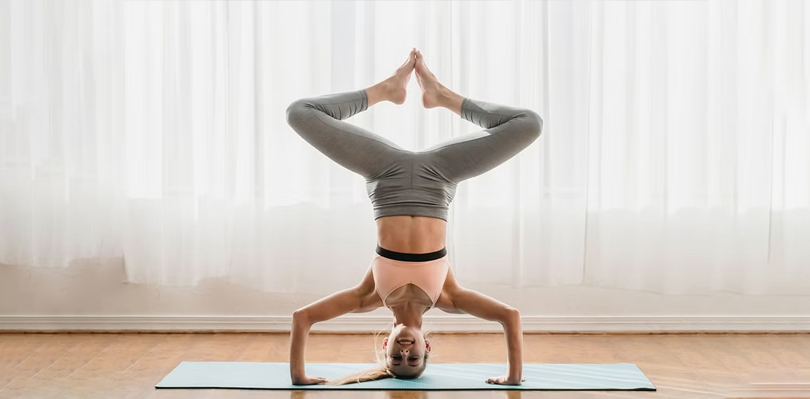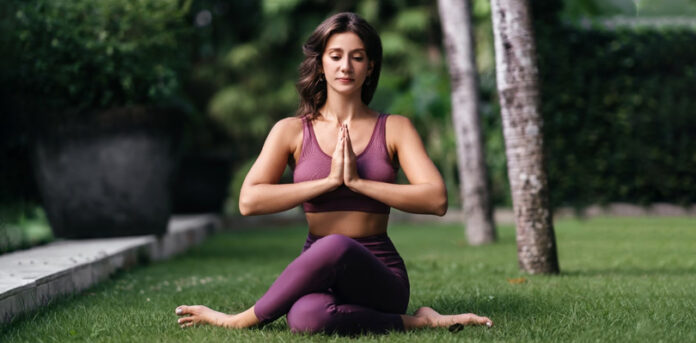Are you ready to embark on a transformative journey of self-discovery and holistic well-being? Yoga, an ancient practice with profound physical and mental benefits, is the perfect starting point. Whether you’re a complete novice or looking to deepen your practice, our guide to “Powerful Yoga Poses For Beginners” is your gateway to a healthier, more balanced life.
In this blog post, we’ll unveil a curated selection of yoga poses that are not only accessible to beginners but also incredibly effective in enhancing flexibility, strength, and inner peace. Say goodbye to stress, welcome increased vitality, and unlock your body’s true potential with these empowering poses. Join us as we explore the fundamentals of yoga, empowering you to embark on a transformative journey towards a happier, healthier you. Dive into this enriching practice, and let the power of yoga lead you on a path to physical and spiritual harmony.
Powerful Yoga Poses For Beginners

Hare some powerful yoga poses for beginners, along with details on each one:
Mountain Pose (Tadasana)
Begin your yoga journey with this foundational pose. Stand tall with your feet hip-width apart, shoulders relaxed, and palms facing forward. Mountain Pose promotes better posture, balance, and a sense of grounding.
Child’s Pose (Balasana)
A gentle resting pose, Child’s Pose is excellent for relieving stress and tension. Kneel on the floor, sit back on your heels, and extend your arms forward, resting your forehead on the mat. Also, it’s perfect for stretching your lower back and calming your mind.
Downward-Facing Dog (Adho Mukha Svanasana)
This pose works on your entire body, stretching and strengthening muscles. Start on all fours, then lift your hips up, forming an inverted “V” shape. It’s great for building arm strength, increasing flexibility, and improving blood circulation.
Warrior I (Virabhadrasana I)
Embrace your inner warrior with this pose. Step one foot forward into a lunge, bend the front knee at a 90-degree angle, and extend your arms overhead. Warrior I strengthens the legs, opens the chest, and builds focus.
Cobra Pose (Bhujangasana)
Strengthen your back and chest with Cobra Pose. Lie on your stomach, place your palms beside your chest, and gently lift your upper body off the ground. However, it’s an excellent pose for improving posture and relieving lower back pain.
Tree Pose (Vrikshasana)
Enhance your balance and concentration with Tree Pose. Stand on one leg, place the sole of the other foot against your inner thigh or calf, and bring your hands to your heart center. This pose encourages stability and mental clarity.
Corpse Pose (Savasana)
Conclude your practice with deep relaxation in Corpse Pose. Lie flat on your back, close your eyes, and let go of all tension. Savasana promotes mental clarity, reduces stress, and allows your body to absorb the benefits of your practice.
Remember, yoga is about progress, not perfection. Don’t push yourself too hard, listen to your body, and focus on your breath throughout these poses. However, as a beginner, consistency, and patience are your best allies on your yoga journey. Enjoy the process and the positive changes it brings to your physical and mental well-being.
Benefits Of These Yoga Poses For Beginners
Here are some benefits of practicing the yoga poses for beginners:
Improved Posture And Alignment
Mountain Pose: Practicing Mountain Pose helps you become more aware of your posture and alignment, leading to better overall posture. It encourages you to stand tall with your shoulders back, reducing the risk of chronic back and neck pain.
Stress Relief And Relaxation
Child’s Pose: This gentle pose promotes relaxation by calming the nervous system. It helps relieve stress and anxiety by allowing you to focus on your breath and create a sense of inner peace.
Enhanced Flexibility And Strength
Downward-Facing Dog: Regularly practicing this pose stretches and strengthens various muscle groups, including the legs, arms, and back. It enhances flexibility in the hamstrings and calf muscles while building upper body strength.
Increased Confidence And Mental Focus
Warrior I: Warrior I is a powerful pose that cultivates a sense of inner strength and confidence. It requires concentration and mental focus, helping you develop a strong mind-body connection.
Back Health And Pain Relief
Cobra Pose: Cobra Pose is beneficial for strengthening the muscles of the lower back and improving spinal flexibility. It can alleviate lower back pain and discomfort caused by poor posture or sedentary lifestyles.
Balanced Body And Mind
Tree Pose: Practicing Tree Pose challenges your balance and concentration. Over time, it improves your sense of balance and mental clarity, helping you feel more centered and grounded in daily life.
Deep Relaxation And Stress Reduction
Corpse Pose: Savasana is the ultimate relaxation pose. It allows your body and mind to fully unwind, reducing stress levels and promoting a state of deep relaxation. Regular practice of Savasana can lead to better sleep and improved overall well-being.
These yoga poses for beginners offer a wide range of physical and mental benefits, making them an excellent starting point for anyone new to yoga. As you continue to practice and progress, you’ll likely experience even more profound positive effects on your body and mind.
Experts Opinion About Yoga Poses For Beginners
Furthermore, experts in the field of yoga and wellness consistently emphasize the importance of these beginner yoga poses. Renowned yoga instructors and healthcare professionals highlight that these poses offer a strong foundation for any yoga practice. Also, they praise Mountain Pose for its role in cultivating body awareness and proper alignment, Child’s Pose for its calming effect on the nervous system, and Downward-Facing Dog for its comprehensive body stretch.
Warrior I is commended for its ability to boost confidence and mental focus, while Cobra Pose is recognized for its therapeutic benefits in alleviating lower back pain. Tree Pose is favored for improving balance, and Savasana is universally endorsed for promoting deep relaxation and stress reduction, making them invaluable tools for enhancing physical and mental well-being.
Tips And Tricks For Yoga Poses For Beginners
Here are a few tips and tricks to help you perform the powerful yoga poses for beginners:
Start With Breath Awareness
Before you begin any yoga pose, take a few moments to focus on your breath. Inhale deeply through your nose, and exhale slowly through your mouth. Breath awareness helps calm your mind and prepares your body for the practice.
Use Props And Modifications
Don’t hesitate to use yoga props like blocks, straps, or cushions to assist you in achieving proper alignment and comfort. For example, in Child’s Pose, place a cushion under your forehead if your head doesn’t comfortably reach the mat.
Progress Gradually
Yoga is a journey, not a race. Start with the basics and gradually progress to more advanced poses. However, consistency and patience are key to avoiding injury and building strength and flexibility over time.
Engage Core Muscles
Engaging your core muscles is crucial for stability and balance. In poses like Downward-Facing Dog and Warrior I, activate your abdominal muscles to support your spine and maintain a strong foundation.
Maintain Proper Alignment
Focus on proper alignment to prevent strain and injury. Pay attention to cues such as keeping your knees over your ankles in Warrior I, and ensuring your wrists are under your shoulders in Downward-Facing Dog.
Practice Mindfulness And Relaxation
Yoga is not just about physical postures; it’s also about mental well-being. In Savasana, let go of any tension and practice mindfulness by observing your breath and sensations in your body. Allow your mind to relax fully.
By incorporating these tips and tricks into your practice, you’ll find that these powerful yoga poses for beginners become more accessible and enjoyable. Remember that yoga is a personal journey, and with dedication and self-compassion, you’ll experience the numerous benefits it offers for your body and mind.
FAQs
Is it Normal to Experience Muscle Soreness After Practicing Yoga Poses?
Yes, it’s entirely normal to experience muscle soreness, especially when you’re just starting your yoga journey. Yoga engages various muscle groups that you may not commonly use, leading to a sensation of soreness. This is a sign that your muscles are adapting and becoming stronger. Also, to alleviate soreness, make sure to practice proper warm-up and cool-down stretches, stay hydrated, and gradually increase the intensity of your practice. Over time, as your body becomes accustomed to the poses, soreness will decrease.
How Often Should I Practice Beginner Yoga Poses to See Progress?
The frequency of your practice depends on your individual goals and schedule. For beginners, it’s recommended to start with 2-3 sessions per week, allowing your body to adapt and recover. As you become more comfortable with the poses, you can gradually increase the frequency. Consistency is key to seeing progress, so aim for a routine that is sustainable for you. Remember that yoga is not just about physical benefits; it’s also about mental and emotional well-being, so listen to your body and practice mindfully.
Can These Poses Help with Stress and Anxiety?
Absolutely. Yoga, including these beginner poses, can be a powerful tool for managing stress and anxiety. Poses like Child’s Pose and Savasana are particularly effective for relaxation and stress reduction. The combination of deep breathing and mindfulness in yoga helps activate the body’s relaxation response, reducing the production of stress hormones. Regular practice can lead to improved mental clarity, reduced anxiety, and an increased sense of overall well-being. However, it’s important to note that while yoga can be beneficial, it’s not a replacement for professional mental health treatment when needed.

